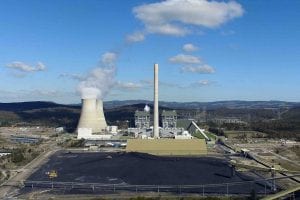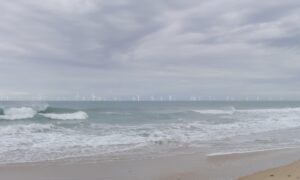Australia’s fleet of black coal-fired power generators helped to deliver record high electricity prices in the final quarter of 2018, even in the face of lower overall demand, a new report from the Australian Energy Market Operator has shown.
AEMO’s latest Quarterly Energy Dynamics report shows that average NEM spot electricity prices for Q4 2018 were $82-96/MWh – the “highest prices for that period on record,” it says, in all regions except Tasmania.
As AEMO explains, these prices are notable not just for the record high, but because they occurred despite average demand for the quarter falling to its lowest level since 2002, and despite the increased contribution of cheap renewables and lower emissions.
According to AEMO, the drivers of the high prices – which for the majority (60 per cent) of the time were set by black coal generators – included planned and unplanned coal plant outages, reduced gas generation availability and output, high gas prices and high hydro prices.
 “Black coal remained the dominant price-setter in the mainland NEM, particularly in Queensland and New South Wales, where it was the marginal generator more than 60 per cent of the time,” the report notes.
“Black coal remained the dominant price-setter in the mainland NEM, particularly in Queensland and New South Wales, where it was the marginal generator more than 60 per cent of the time,” the report notes.
“In Victoria and South Australia, black coal set the price around 40 per cent of the time,” it added, noting that the dominant price-setting power stations were Gladstone (11%), Bayswater (10%) and Stanwell (9%) power stations. (Yes, black coal generators even set the price in coal-free South Australia, because the market is connected).
Interestingly, AEMO observed that the prices did not go beyond the level that might trigger further investigation from regulators (who investigate when prices go above $5,000/MWh). Generators appear to now understand the boundaries they must not cross, but that still allows plenty of area to play games.
AEMO’s report notes that when black coal wasn’t dictating prices, gas was doing the job in setting high prices– led by Torrens Island and Pelican Point in South Australia.
“Q4 recorded an increased incidence of gas playing a price setting role. GPG set the price 25 per cent of the time in the NEM compared to the long-term average of 15 per cent.”
And it, too, set the price at higher levels. For example, in Victoria, when gas set the price it averaged $115/MWh compared to $91/MWh in Q4 2017, the report found.
Hydro’s reduced price-setting role, meanwhile, coincided with reduced output and availability at prices below $100/MWh.
Another contributor to the record electricity prices, the report noted, included the structural shift of offers from black coal-fired generators to higher prices between 2014 and 2018, as well the progressive closure of approximately 4,000MW of coal-fired capacity between 2013 and 2017.
Coal generation also distinguished itself in Q4 2018 for the frequency of outages – both planned and unplanned.
 It was the extended outages at Yallourn and Loy Yang A power stations, the report notes, that helped brown coal-fired generation deliver the lowest quarterly average since market inception.
It was the extended outages at Yallourn and Loy Yang A power stations, the report notes, that helped brown coal-fired generation deliver the lowest quarterly average since market inception.
And black coal-fired generation, too, experienced a load of outages – although all up it delivered more power in Q4 than in Q3 2018, despite lower electricity demand.
“There was … a relatively high number of sudden generator trips when compared to recent quarters, particularly in Queensland and New South Wales.”








